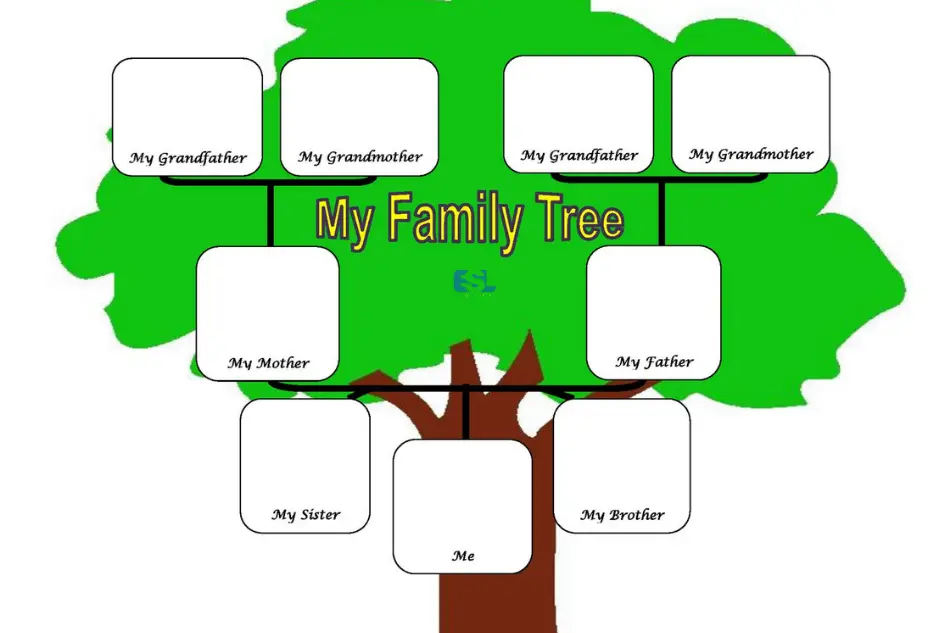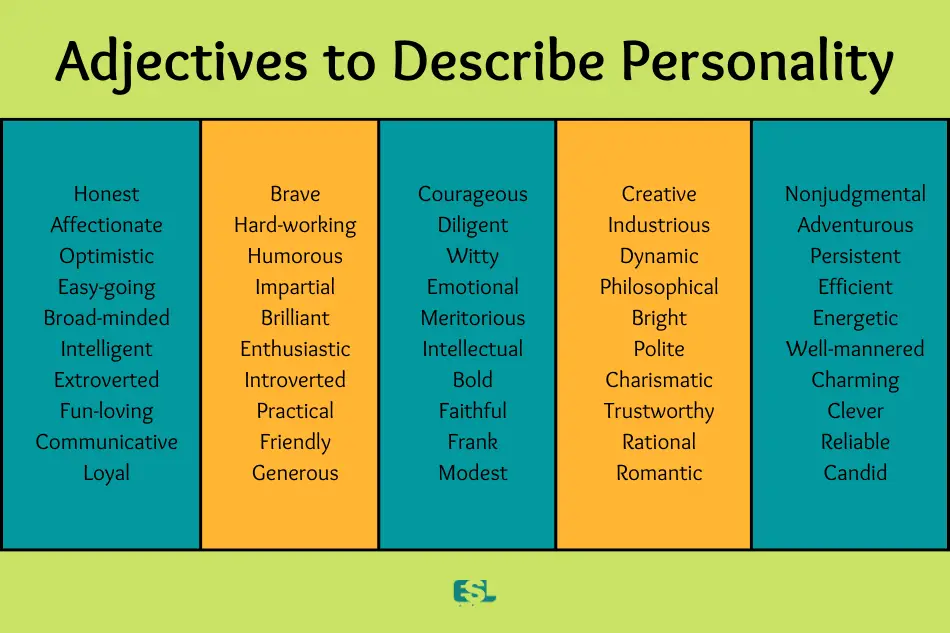On many occasions, we need to talk about our families. Suppose you meet someone for the first time; you must introduce yourself. We also talk about our families while introducing ourselves and getting to know each other. Talking about family members can also be a good source of small talk.
You should mention the number of family members, the type of family you belong to, and share the family tree while talking about your family in English. Besides, you may describe the family members individually and the things you love about your family.
Are you looking for a book or a guide to help you learn and improve your English? You may try English Made Easy Volume One: A New ESL Approach: Learning English Through Pictures (Amazon Link).
Here are some common English sentences to talk about your family in English.
- I am from a small family, with my parents and a brother.
- My brother is younger than me, and he is doing his BA.
- My father is a teacher at a secondary school.
- My mother is an entrepreneur.
- Both of my parents are sincere, good-hearted, and hard-working.
- They love us more than anything else and take good care of us.
- We celebrate different occasions together.
- I love to spend my free time with my family members.
- I wish to live the rest of my life with my lovely family members.
- I love my family a lot and can do almost for my family.
Table of Contents
- Guide to Talking About the Number of Family Members
- How to Talk About the Family Type
- List of Common Family Members & Relatives in English
- Guide to Describing The Family Tree
- Talking About the Number of Your Immediate Family Members
- Talking About the Number of Your Extended/Joint Family Members
- Talking About the Number of Your Family Members by Marriage
- How to Describe a Family Member
- Talking About Profession/Expertise/Skills of Your Family Members
- Guide to Talking About Likes & Dislikes of Your Family Members
- How to Describe the Bonding Between You & Other Family Members
- How to Talk About the Things That You Like About Your Family
- Sample Conversation: Talking About Your Family in English
- In Conclusion
- 10 Frequently Asked Questions Related to Talking About Your Family in English
Guide to Talking About the Number of Family Members
One of the most important pieces of information you need to share while talking about your family is how many members are there. You can talk about the number of your family members in English differently. Here are some examples below.
- There are five members in my family.
- My family consists of five members.
- We are seven members in my family.
- My family consists of my wife and a child.
- I have my parents and two siblings in my family.
- We are two brothers and sisters in the family.
- I have a brother and a sister.
- I am the only child of my parents.
- I live with my parents and my grandparents in the same house.
- My family consists of my parents and two siblings.
How to Talk About the Family Type
Family can be of different types depending on the number of members in a family. In addition, how the family members live under the same roof also determines the kind of family. There can be different types of families depending on the culture. So, while talking about family, you can also talk about your culture, especially the practices related to family relationships.
Now, let’s see how you can mention different family types while talking about your family in English.
- I am from an extended family. My family consists of my parents, siblings, aunts, uncles, grandparents, and cousins.
- I belong to a grandparent family.
- I live in a nuclear family. There are my parents and my siblings only.
- I am brought up in a same-sex family.
- I am from a single-parent family.
- I was raised in a step-family.
List of Common Family Members & Relatives in English
- Father – A male parent
- Mother – A female parent
- Parent – A father or a mother
- Brother – A male offspring having both parents in common with another offspring; a male sibling
- Sister – A female offspring having both parents in common with another offspring; female sibling
- Sibling – A brother or sister
- Cousin – The son or daughter of an uncle or aunt
- Aunt – The sister of one’s father or mother; the sister of one’s father or mother
- Uncle – A brother of one’s father or mother; an aunt’s husband
- Nephew – A son of one’s brother or sister; a son of one’s spouse’s brother or sister.
- Niece – A daughter of a person’s brother or sister; a daughter of a person’s spouse’s brother or sister
- Wife – A married woman, especially when considered in relation to her partner in marriage
- Husband – A married man, especially when considered in relation to his partner in marriage
- Spouse – Either member of a married pair in relation to the other; one’s husband or wife
- Son – A male child or person in relation to his parents
- Daughter – A female child or person in relation to her parents.
- Child – A son or daughter:
- Grandparent – A parent of a parent
- Grandmother – The mother of one’s father or mother
- Grandfather – The father of one’s father or mother.
- Grandson – A son of one’s son or daughter
- Granddaughter – A daughter of one’s son or daughter
- Grandchild – A child of one’s son or daughter
- Stepmother – The wife, by a later marriage, of one’s parent
- Stepfather – The husband, by a later marriage, of one’s parent
- Stepson – A son of one’s husband or wife by a previous marriage
- Stepdaughter – A daughter of one’s husband or wife by a previous marriage
- Stepsister – One’s stepfather’s or stepmother’s daughter by a previous marriage
- Stepbrother – One’s stepfather’s son or stepmother’s son by a previous marriage
- Half-sister – A female offspring having only one parent in common with another offspring
- Half-brother – A male offspring having only one parent in common with another offspring
- Sister-in-law – The sister of one’s spouse; the wife of one’s brother; the wife of one’s spouse’s brother
- Brother-in-law – The brother of one’s spouse; the husband of one’s sister; the husband of one’s spouse’s sister
- Father-in-law – The father of one’s spouse
- Mother-in-law – The mother of one’s spouse
Courtesy: www.dictionary.com
Guide to Describing The Family Tree
You might have heard the term family tree. So, what is a family tree, and how do you describe your family tree?
A family tree is a visual representation of generations of families. It shows how family members of one generation are connected to the others. You can easily get an overall idea of one’s present family members and ancestors from a family tree.
Here is a sample picture of a family tree. You can make your family tree following the same format. You can also download this picture, make necessary changes, and put names and photos of your family members to make your own family tree.

Talking About the Number of Your Immediate Family Members
People closest to you and living together are usually your immediate family members. However, some members may not live in the same house; still, they can be your immediate family members.
If you are single, your immediate family members are usually your parents and siblings. On the other hand, if you are married, your wife and your children are members of your immediate family.
So, while talking about your immediate family members, you are expected to talk about your parents, siblings, wife, and children. Let’s see some example sentences that you can use while talking about your immediate family members.
- There are five people in my family. There are me, of course, my parents, and my older sister and younger brother.
- I live in a small family. There are three of us—I, my mother, and my father.
- I belong to a big family. There are eight people—me, my parents, and five siblings.
- It’s just my mother and me in the family.
- We are a tiny family—me, my wife, and our only child.
Talking About the Number of Your Extended/Joint Family Members
An extended family usually consists of more than two generations having a blood relationship. If you belong to an extended family, that means you have relatives like your grandparents, uncles, aunts, and cousins in your family. So, an extended family is naturally a big family.
- There are fifteen members in my family. I live in the same house with my parents, grandparents, uncles, and aunts.
- I belong to an extended family. There are twelve members in my family.
- We are ten people in the family. There is, of course, me, my parents, two siblings, grandparents, two uncles, and one aunt.
- I live in a joint family. We are more than eight cousins living with our parents, uncles, and grandparents.
Talking About the Number of Your Family Members by Marriage
Before marriage, you have people in your family with blood relationships. However, when you are married, you get a new set of relatives that we call in-laws. You share the same family that your spouse has.
Your spouse’s father becomes your father-in-law, and your spouse’s mother becomes your mother-in-law. The same in-law kinship pattern applies to your spouse’s brothers, sisters, uncles, aunts, etc.
In many families, blood relatives and in-law relatives live together. So let’s see how we can talk about family members by marriage.
- There are five people in my family. There is me, my spouse, my parents, and my brother-in-law.
- My wife, parents, parents-in-law, and I live as a family. We share a very happy life.
- Besides my wife, parents, and siblings, my sister-in-law also lives with us. We are a happy family.
- My father-in-law is the oldest person in our family. We all try to take good care of him. We are delighted to have him with us at this age.
How to Describe a Family Member
When you talk about your family members, it’s not all about talking about how many people are there in the family. There is something more than that.
If needed, you may need to talk about your brother’s appearance or personality, your parents’ profession/expertise/skills, or even what they like or dislike. You can also share about the bonding between you and your family people.
Guide to Describing the Appearance of Your Family Members
To describe someone’s appearance, you may use some adjectives. You can talk about their general appearance and other features like dresses, overall build, height, complexion, age, facial features, hair, facial hairs, etc.
Let’s see some example sentences to describe the appearance of your family members.
- My elder brother is very handsome.
- My sister usually wears western dresses.
- My father is slim.
- My younger brother is on the heavier side.
- My uncle is of average height.
- My eldest cousin is dark and handsome.
- My sister has long, straight black hair.
How to Describe the Personality of Your Family Members
While you describe a person, you also talk about the personality of that person besides their appearance. You may use adjectives to talk about someone’s personality. Here is a list of adjectives.

Talking About Profession/Expertise/Skills of Your Family Members
While describing your family members, you can also talk about their profession, education, skills, and expertise. Here are some example sentences that can help you describe the job of your family members.
- My father is a teacher at a high school in Dhaka.
- My elder brother is a government employee.
- My sister is an IT expert.
- My cousin is a Ph.D. holder.
- My father-in-law is a businessman.
- My uncle is a doctor.
- My brother is an outstanding android app developer.
- My mother is an ESL instructor.
Guide to Talking About Likes & Dislikes of Your Family Members
What your brothers or sisters love to do, or what your parents are interested in, is also essential to mention while talking about them. You can also share what they dislike. Here are example sentences to talk about family members’ likes and dislikes.
- My brother is very enthusiastic about guitar playing.
- My sister is fond of classical music.
- My cousin loves to watch cricket.
- My wife likes to travel.
- All of my cousins follow club football.
- Swimming is one of the favorite pastimes of my son.
- All of us in the family like South Asian food.
- My mother likes desserts.
How to Describe the Bonding Between You & Other Family Members
While talking about someone from your family, you can speak of the nature of the relationship between you and them. For example, you can talk about how friendly you are with your younger brother. Now, let’s see some sentences that can give you ideas on how to talk about your relationship with your family members.
- My elder brother is also my best friend.
- I can share almost anything with my parents.
- My sister always supports me.
- My cousins are my friends too.
- My father is my guide and philosopher.
- I am very friendly with my parents.
How to Talk About the Things That You Like About Your Family
There are a lot of things you can talk about your family. Family is where you create the most memories by doing many things together. Now, we’ll see how you can talk about what you enjoy doing with your family.
- I love to travel with my family.
- Every winter, we enjoy barbeques with my cousins and other relatives.
- I love visiting my grandparent’s place every year.
- Watching cricket with my father is very enjoyable.
- I love to dine with my family.
- We arrange frequent family get-together parties.
Sample Conversation: Talking About Your Family in English
Situation: Two colleagues, Mark and Elena, are having lunch together. Elena shares details about her family when Mark expresses curiosity.
Mark: Elena, I remember you mentioned once that you have a big family. How many siblings do you have?
Elena: Yes, that’s right! I have three siblings – two brothers and a sister. I’m the second oldest.
Mark: That sounds like a lively household! Are you all close?
Elena: We are. Even though we’ve all moved to different cities for work, we make sure to catch up regularly. My youngest brother just started college last year, and it’s been fun hearing about his experiences.
Mark: That’s great. And your parents?
Elena: My dad’s a retired teacher, and my mom’s a homemaker. They’re currently enjoying their peaceful life, traveling now and then. How about you? Tell me about your family.
In Conclusion
While talking about your family members, you can share many things about them. However, I would recommend you share only the positive things.
I have already discussed some expressions here that you can use to talk about your family members. If you still want to ask me anything, you can comment below.
Thanks for reading!
Happy learning!
10 Frequently Asked Questions Related to Talking About Your Family in English
1. What are common phrases to introduce family members?
Phrases like “This is my…”, “I have a…”, or “Meet my…” are commonly used to introduce family members.
2. How can I describe the age order of siblings?
You can use terms like “oldest”, “middle child”, “second youngest”, or “youngest” to describe the order of birth among siblings.
3. Are there specific terms for extended family members?
Yes, terms like “cousin”, “aunt”, “uncle”, “grandparents”, and “in-laws” refer to extended family members.
4. How can I talk about family members’ professions or hobbies?
You can say, “My brother is a doctor,” or “My sister loves hiking.”
5. What if I don’t want to share specific details about my family?
It’s okay to be vague or general, like “I come from a small family,” or “We’re spread out across the country.”
6. How can I ask someone about their family without being intrusive?
Using open-ended questions like “Do you have any siblings?” or “Tell me about your family if you’d like” allows the other person to share as much or as little as they’re comfortable with.
7. What are some cultural considerations when talking about family?
Family dynamics and structures can vary across cultures. It’s essential to approach the topic with sensitivity and avoid making assumptions.
8. How can I describe family relationships after divorces or remarriages?
Terms like “step-sibling”, “half-brother/sister”, or “my mom’s partner” can be used to describe such relationships.
9. Can I use family idioms in conversation?
Certainly! Phrases like “Like father, like son” or “The apple doesn’t fall far from the tree” are idiomatic expressions related to family.
10. How can I respond if someone shares sensitive family information?
Respond with empathy and understanding. Phrases like “I’m here for you,” “Thank you for sharing that with me,” or “I’m sorry to hear that” can be comforting.





